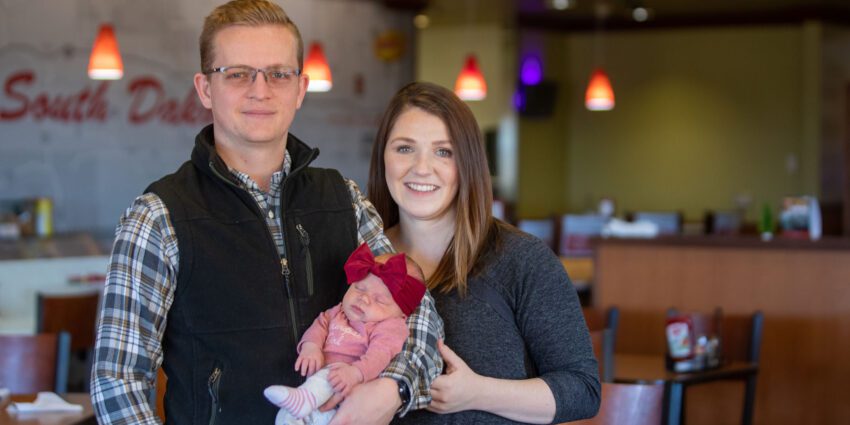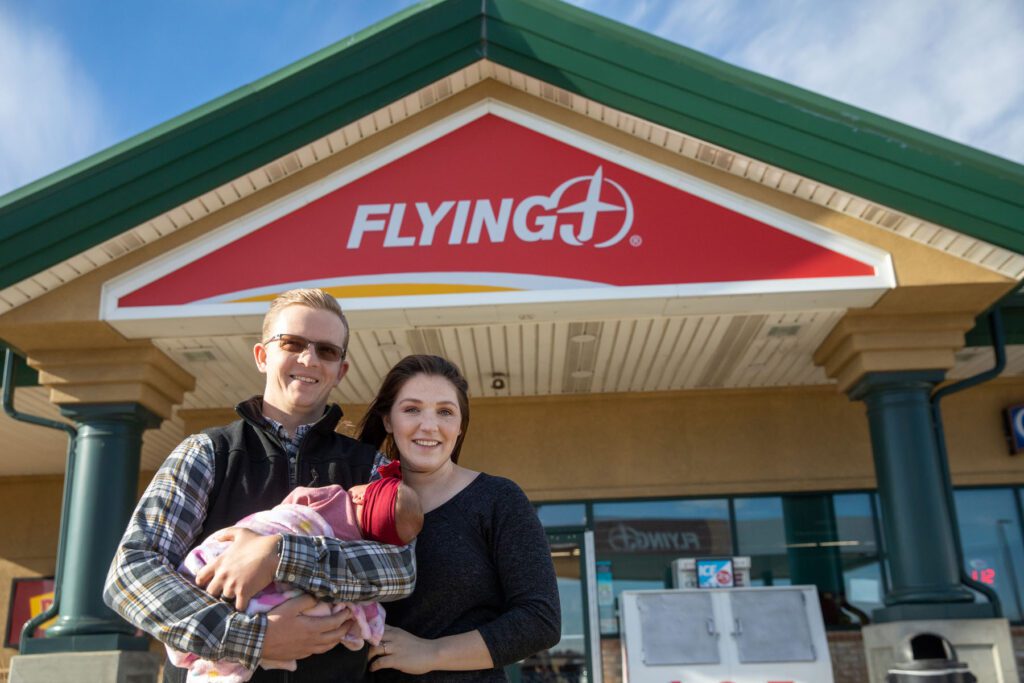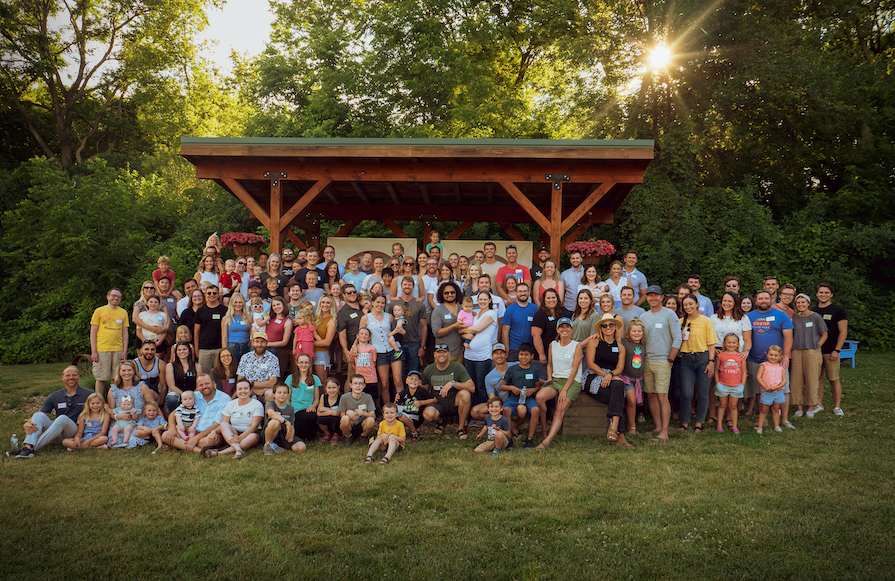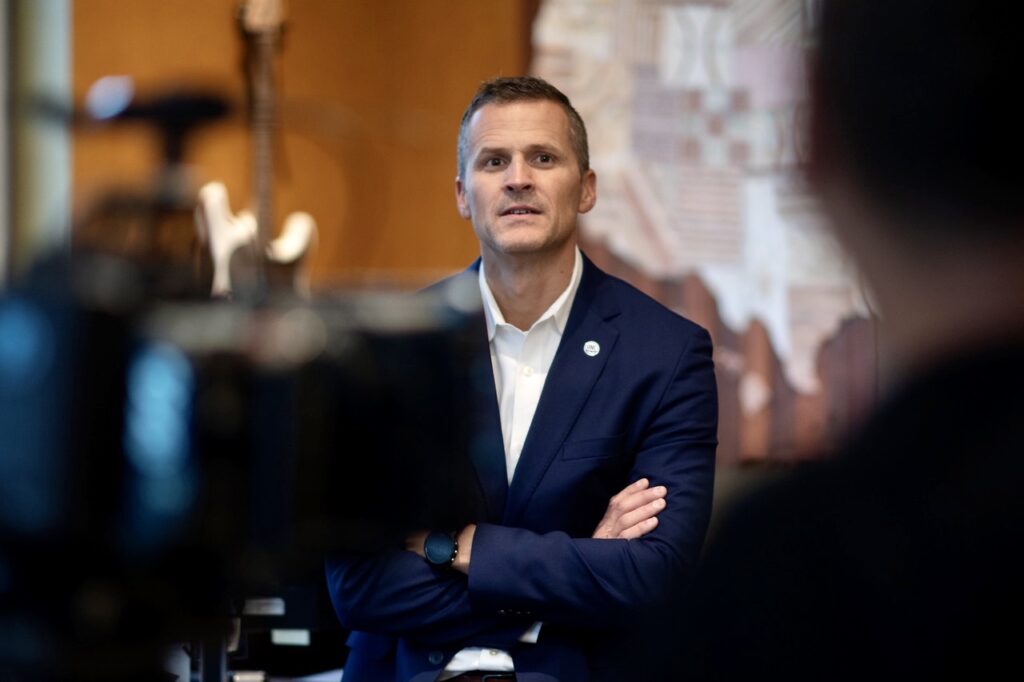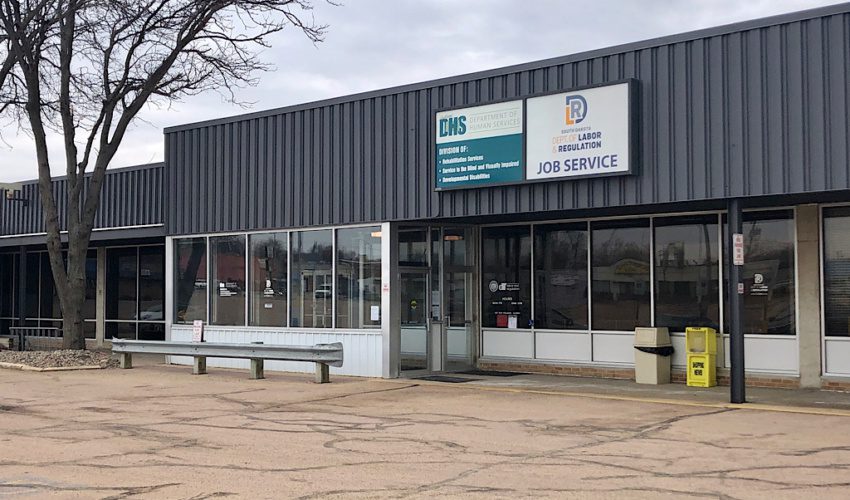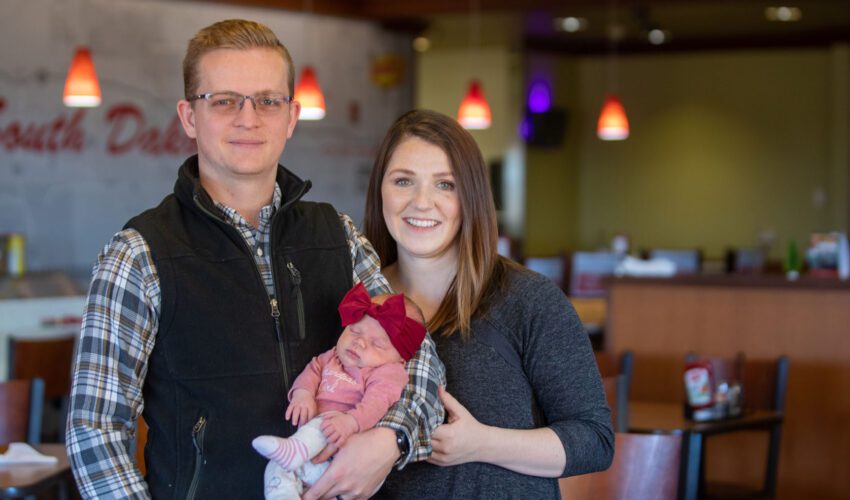Once rare in South Dakota, paid family leave is gaining traction
Dec. 13, 2021
By John Hult, for SiouxFalls.Business
No employers in South Dakota are required to offer paid family leave, but job seekers needn’t look far to find the ones that do.
The benefit, standard in much of the world and mandated in 11 states, was once a rare find in South Dakota, used as a draw for white-collar or tech workers. In 2021, you don’t need a college degree to find it.
Flying J Travel Center has one of the most generous family leave packages on offer in Sioux Falls. After a year and 1,250 hours on the job, all 28,000 full- and part-time employees in any location across the U.S. and Canada are eligible for six weeks of parental leave — at their full salary.
The new benefit came in 2019, part of a benefit expansion meant to address the family needs of an employee base that looks, demographically, “a lot like the U.S. population as a whole,” according to Marilyn Fontaine, Pilot Flying J’s vice president of total rewards and shared services.
“It’s for everyone, from me personally to the cashier who’s helping you check out,” Fontaine said. “We felt like it was the right thing to do. We’re a family-owned company, and we invest in our team members.”
The change at Flying J mirrors broader trends in the U.S.
As debates over federally mandated paid leave play out in Washington, D.C., the ship has sailed for the private sector. More companies offer paid family leave each year, thanks to both long-term shifts in attitude on work-life balance and the recent emergence of an exceedingly tight labor market.
Nearly half of employees nationwide had the option for paid family leave through their employer in 2020, according to the most recent survey from the Society for Human Resource Management. That’s up from just over one-third in 2019.
Job postings for Sioux Falls reflect as much. National firms such as Amazon and FedEx, both ramping up local operations, offer paid leave. So do smaller homegrown operations such as the digital marketing company Click Rain. The words “paid family leave” appear in ads for bartenders or line cooks at Olive Garden, associates at Visionworks and in a variety of health care organizations.
South Dakota employers have lagged those in other states in the embrace of family leave, according to Tammy Loos, a professor in human resource management at the University of South Dakota’s Beacom School of Business, but they’re beginning to catch up.
“A lot of it is just driven by the marketplace,” Loos said. “I think what has prompted it in South Dakota has been these larger companies coming into the state.”
Nearly every country offers some form of paid maternity leave. In most U.S. states, nothing is required.
The Family and Medical Leave Act has guaranteed 12 weeks of unpaid leave since the early 1990s, but most employees can’t afford to take it.
In the absence of federal rules on paid leave, the private sector has stepped up to offer it, both to comply with state-level mandates and to compete for employees across state lines.
The changes could become a more permanent part of the human resources landscape, Loos said, following a path cleared by other benefits over the years.
Health insurance has long been an expected benefit for full-time employees. Short-term disability for new mothers is now a standard expectation, as well. Paid leave is now moving into place to become another thread in the private sector social safety net.
“The FMLA was great in that it provided job protection and benefits protection, but when you don’t have some kind of support, even with short-term disability, it can be a financial burden,” Loos said. “When you talk about child care now, I see that employer-led initiatives are leading the way.”
Parental leave eased burden for Flying J family
Dillion Dutson started with the Flying J in Sioux Falls about five years ago, cleaning showers and floors at the sprawling Interstate 29 truck stop. He’s now the manager of a Flying J near Boise, Idaho, a job he’ll return to after finishing up six weeks of paternity leave. He was back in Sioux Falls visiting family in early December — just one of the opportunities he had thanks to the benefit.
He and his wife, Haley, were able to bring their new daughter, Tatum, to see Haley’s family in Northern California before returning to Sioux Falls for the holiday visit with Dillion’s family. In the first few weeks after Tatum’s birth, Haley and Dillion took turns watching the baby while the two of them eased into an understanding of their new roommate’s habits and sleep patterns.
The time at home with Tatum served to strengthen the parental and matrimonial bonds for the first-time parents, who leaned on one another in a home several hours away from their nearest relative.
“We had rotating shifts in the living room so we could rest,” he said. “I don’t know that my relationship with Tatum and with Haley would have been as strong (if I’d gone right back to work).”
Dutson’s commitment to his company is tied in part to his company’s commitment to its staff. There’s high turnover in the industry, but the company plans ahead to shuffle schedules and cover for new parents, in Dutson’s case bringing in outside help to cover the 60-odd hours he typically spends at work each week.
“There aren’t a whole lot of extra bodies, but we prioritize this,” he said.
Theresa Morales’ children were born years ago, but the long-term Flying J employee is glad her co-workers have the option — especially the male ones.
“The fact that it applies to dads is great because dads need to connect with their kids too,” said Morales, who handles inventory as the Flying J’s retail sales specialist.
She doesn’t mind covering for two co-workers who recently welcomed new babies to their families. Doing so means she’s more likely to see them back at work and to keep working with them for months or years into the future.
“We have super high turnover,” she said. “It’s hard to get people to stay. Both of the employees who are out right now are good employees, and we want to keep them.”
Generational shift drives consideration for family leave, flexibility
Prioritizing family time may signal a company’s commitment to its staff and core values, but it’s the result of shifting employee expectations.
Younger workers don’t just appreciate work-life balance in the workforce, they expect it, according to Denise Guzzetta, the vice president of talent and workforce development at the Sioux Falls Development Foundation.
In years past, baby boomers helped standardize benefit packages with their support for retirement plans and health care. Now, many millennials and younger Gen Z workers would rather drive for Uber, deliver groceries or work multiple part-time jobs than commit to a full-time job without flexibility and a respect for work-life balance.
“I look at this as a generational push. With Gen Z, they’re demanding the quality-of-life stuff,” Guzzetta said. “They’re willing to come back to the workforce, but only if those things are available.”
Click Rain began in the late 2000s with those expectations in mind. The Sioux Falls firm built three weeks of paid maternity leave into its benefits package. It also offers a week of meals for new parents, and co-workers organize a week of house cleaning for them.
Employees also are able to work from home as needed, part of a business culture built to make sure employees don’t feel forced to choose between family and career.
“The decisions we’ve made are less about what’s happening across the country and more about what we do as a people-centered, people-first organization,” said Click Rain CEO Natalie Eisenberg, who spoke to SiouxFalls.Business from a parked vehicle on a Friday morning, shortly after dropping off her son at school. “We feel like if a person’s in a good place with their family life, they’ll be in a better place at work.”
It does help the company to stay competitive, however, Eisenberg said. Click Rain’s leadership points to its workplace culture as important to building loyalty and goodwill in a job market whose younger members value mobility. Several of the 40 to 50 employees at Click Rain have been around for four to five years. A few have a decade on the job.
“By and large, our employees just love this,” said Carissa Schoffelman, the company’s vice president of administration.
Mayor: Employers should consider family benefits
Mayor Paul TenHaken, who founded Click Rain but left for a career in politics a few years ago, said there are plenty of dollars-and-cents reasons to make the investment in paid leave too. Finding, interviewing, onboarding and training new employees can cost $10,000 to $20,000 at times, factoring in productivity, job postings, paperwork and the like.
Losing an employee to a company that would offer paid leave or other family-friendly benefits can cost as much or more as the benefits.
Paid leave “is expensive, but so is turnover,” TenHaken said. “I knew what it would cost to lose a web developer. We looked at it as more of an investment.”
Private companies like Amazon that expect to pull from a shallow labor pool need to offer more to stay competitive, the mayor said — more benefits, higher wages, more flexibility where possible — and he suspects that local businesses won’t have much choice but to move in that direction. Taco Johns now offers $16 an hour for new employees, for example, and “they’re never going back.”
From tuition reimbursement to paid leave or even child care subsidies, he said, “there’s no benefit out there anymore that makes me raise an eyebrow.”
The mayor hasn’t pushed for paid parental leave for city employees yet, but he expects it will come up in future salary and benefit negotiations. He did move to expand work-from-home options and casual attire for the city, but “change comes more slowly in the public sector,” he said.
Even for employees who’ve seen the emergence of paid family leave at their Sioux Falls jobs, gaps remain, and those gaps can force difficult decisions. Child care stipends have yet to catch on in a widespread way as employer-paid benefits, for example, so working parents pondering a second, third or fourth child and the accompanying day care bills may find themselves in a tough spot.
The paid family leave benefits on offer in Sioux Falls may be welcomed by employees, but even the six weeks available through Pilot Flying J is half of the international standard of 12 weeks.
TenHaken said he tends to be suspicious of government mandates, but he suggested that private companies will need to continue to consider their employees’ off-work needs if they expect to thrive in an environment where the social safety net for families isn’t built-in and taxpayer funded.
President Joe Biden’s “Build Back Better” social spending bill, which includes a paid family leave provision whose details remain the subject of intense debate among congressional Democrats, has brought more attention to questions about child care and parental protections. Sioux Falls employers, the mayor said, would be wise to pay attention.
“The thing that it’s done has been to elevate these social needs and bring them to light,” he said. “Whether that bill passes or not, I think every employer is considering this.”

